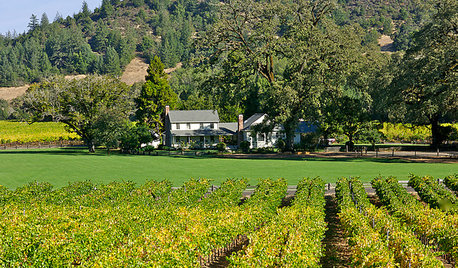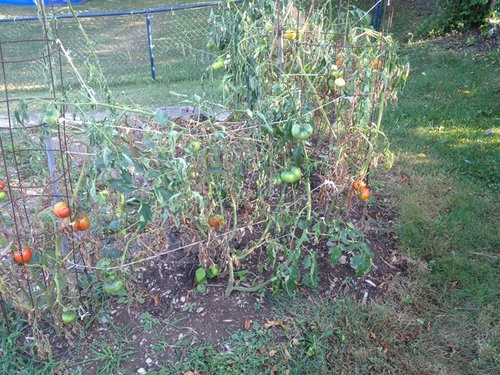What did I do wrong to kill my tomatoe plants
mfran12345 (Zone 6b, northeast PA)
9 years ago
Related Stories

EDIBLE GARDENSSummer Crops: How to Grow Tomatoes
Plant tomato seedlings in spring for one of the best tastes of summer, fresh from your backyard
Full Story
MOST POPULARThe Perfect Houseplant for People Who Kill Houseplants
If you can fill a jar with water, you can keep golden pothos vine happy — and it will pay you back with cleaner air and a greener home
Full Story
GARDENING GUIDESWhat's Wrong With My Plant? Leaves Often Hold the Clues
Learn how to identify common plant ailments by reading their leaves
Full Story
LIFEKitchen Traditions: Tomato Season Meets a Family Legacy
Somewhere a Sicilian great-great-grandmother is smiling at a bowl of American-made sauce
Full Story
HOUSEPLANTS8 Houseplants You Can't Kill
They're forgiving and let you forget. Houseplants don't get any easier than this
Full Story
LIFEYou Said It: ‘Every Room Should Have the Right Wrong Thing’ and More
This week on Houzz we were inspired to break out of catalog styling ruts and let our design freak flags fly
Full Story
COLORWhen Color Could Kill: Stories From the History of Paint
Delve into paint's storied past — what you learn about its history and modern incarnations may surprise you
Full Story
LIFEYou Said It: ‘They Did Not Have a Throwaway Mentality’ and More
Houzz articles about Fred MacMurray's farm, sci-fi style, hoodoos, and 31 true remodeling tales struck a chord this week
Full Story
GARDENING GUIDESHow I Learned to Be an Imperfect Gardener
Letting go can lead to a deeper level of gardening and a richer relationship with the landscape. Here's how one nature lover did it
Full Story
HOUSEPLANTS8 Essentials for Healthy Indoor Plants
Houseplants add so much to our homes — and can thrive when grown in the right conditions. Keep these tips in mind
Full Story







glib
tsugajunkie z5 SE WI ♱
Related Professionals
Owings Mills Landscape Architects & Landscape Designers · Sand Springs Landscape Architects & Landscape Designers · Vernon Hills Landscape Architects & Landscape Designers · Wixom Landscape Architects & Landscape Designers · Forest City Landscape Architects & Landscape Designers · Fountain Valley Landscape Contractors · Hoover Landscape Contractors · Madera Landscape Contractors · Middleton Landscape Contractors · Oviedo Landscape Contractors · The Villages Landscape Contractors · Goldenrod Landscape Contractors · Ferguson Landscape Contractors · Glenview Driveway Installation & Maintenance · Crestwood Driveway Installation & Maintenanceseysonn
mfran12345 (Zone 6b, northeast PA)Original Author
planatus
glib
tsugajunkie z5 SE WI ♱
glib
mfran12345 (Zone 6b, northeast PA)Original Author
glib
mdfarmer
john9001